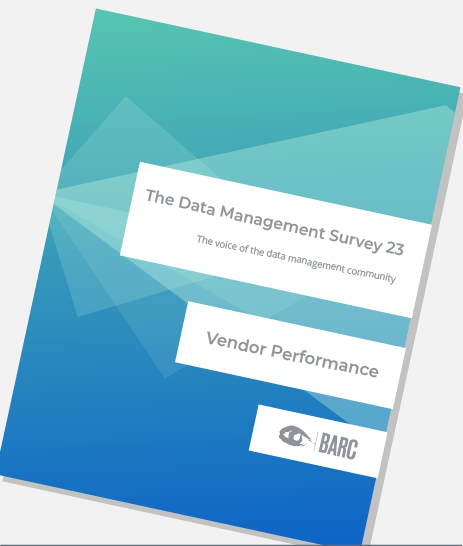Snowflake Cloud Data Platform
Snowflake was founded in 2012 by two ex-Oracle executives to create a data platform that would har-ness the immense power of the cloud. By 2014, they had unveiled the Cloud Data Warehousing product, a predecessor to the current Snowflake Cloud Data Platform. The company made headlines with its successful IPO in October 2020. Globally operational, Snowflake serves approximately 8,100 customers across multiple industries and is supported by a robust network of over 1,500 partners.
The Cloud Data Platform is renowned for its straightforwardness and adaptability, catering to diverse workloads. It emphasizes “Near-Zero Management,” encapsulating routine database tasks for more effortless operations. The platform’s synergy with cloud infrastructure and a unique architectural strat-egy ensure performance and scalability. This forms the foundation for efficient management across nine distinct workloads, including traditional data warehousing, data lakes, marketing analytics and AI.
Accessible on Amazon, Google and Microsoft cloud platforms, the system is cloud-neutral. The Amazon cloud is the top choice for most of Snowflake’s clientele. At its core, the platform utilizes the cloud pro-vider’s object storage for fail-safe data retention. It serves as a basis for cloud services and independ-ent processing units tailored for varied tasks. These units can be customized as required, granting ded-icated data perspectives. Equipped with computational power as needed, the cloud services encom-pass security, metadata and data access interfaces. The scalability of services, data storage and pro-cessing nodes ensures one workload does not compromise another’s performance. This unique archi-tecture supports SQL interfaces, facilitating compatibility with numerous analytical tools. For intricate data operations or analytical needs, partner assistance is readily available.
An intriguing feature is the Data Marketplace, designed to foster inter-departmental collaboration through data sharing. The Marketplace has over 1,700 products from 360+ providers and features a free and try-and-buy model. Snowflake empowers users to distribute their data internally or with exter-nal affiliates using bespoke authorization profiles without duplicating data. Impressively, Snowflake serves 639 Forbes Global 2000 clients, handling a staggering 3.3 billion queries daily.
The founders envisioned a solution leveraging the vast capabilities of the public cloud. This goal was realized as the Snowflake Data Cloud – a global platform enabling organizations to access, share and analyze data at scale and with efficiency. Within this ecosystem, data silos are reduced, facilitating se-cure and governed data sharing and executing a wide variety of analytical workloads. Snowflake’s plat-form offers an integrated solution for various applications ranging from cybersecurity to artificial intel-ligence (AI). The company recently reported a 15.5 percent surge in AI and machine learning (ML) adop-tion among marketing teams, underscoring its significance in modern marketing strategies.

User & Use Cases
The most popular use case for Snowflake Cloud Data Platform customers is data warehousing and BI (81 percent), which is 13 percent less than last year. Data integration (ETL, ELT) was ranked second by users at 71 percent, while data automation use cases and data preparation by business users are rele-vant for 48 percent of respondents. 43 percent are using Snowflake Cloud Data Platform to support data lakehouse use cases, representing a drop from 56 percent last year.
Snowflake Cloud Data Platform continues to be popular with large enterprise companies, with a total of 38 percent from that group. 52 percent of Snowflake users came from medium-sized companies, an increase over last year of 8 percent, while 10 percent came from companies with fewer than 100 em-ployees, a 4 percent increase over last year’s total from that segment. Snowflake has enjoyed signifi-cant customer growth in its base of 31 percent over the last year and appears to be getting traction with smaller firms. It is quick and easy to deploy new data environments on the platform with simple sizing and compute options that align well with this size of customer.
Snowflake’s mean average of 81 consumer users leveraging its solution per company is significantly lower than its competitors in its three peer groups (Cloud Data Warehousing, Analytical Database Prod-ucts and Data Platforms). However, it is above the average for expert users, demonstrating a broader adoption in these roles.
80 percent of Snowflake Cloud Data Platform customers utilize the solution several times a day or week, illustrating that it is a core component of their data management strategy. Only 20 percent of users work on the platform monthly or less often.
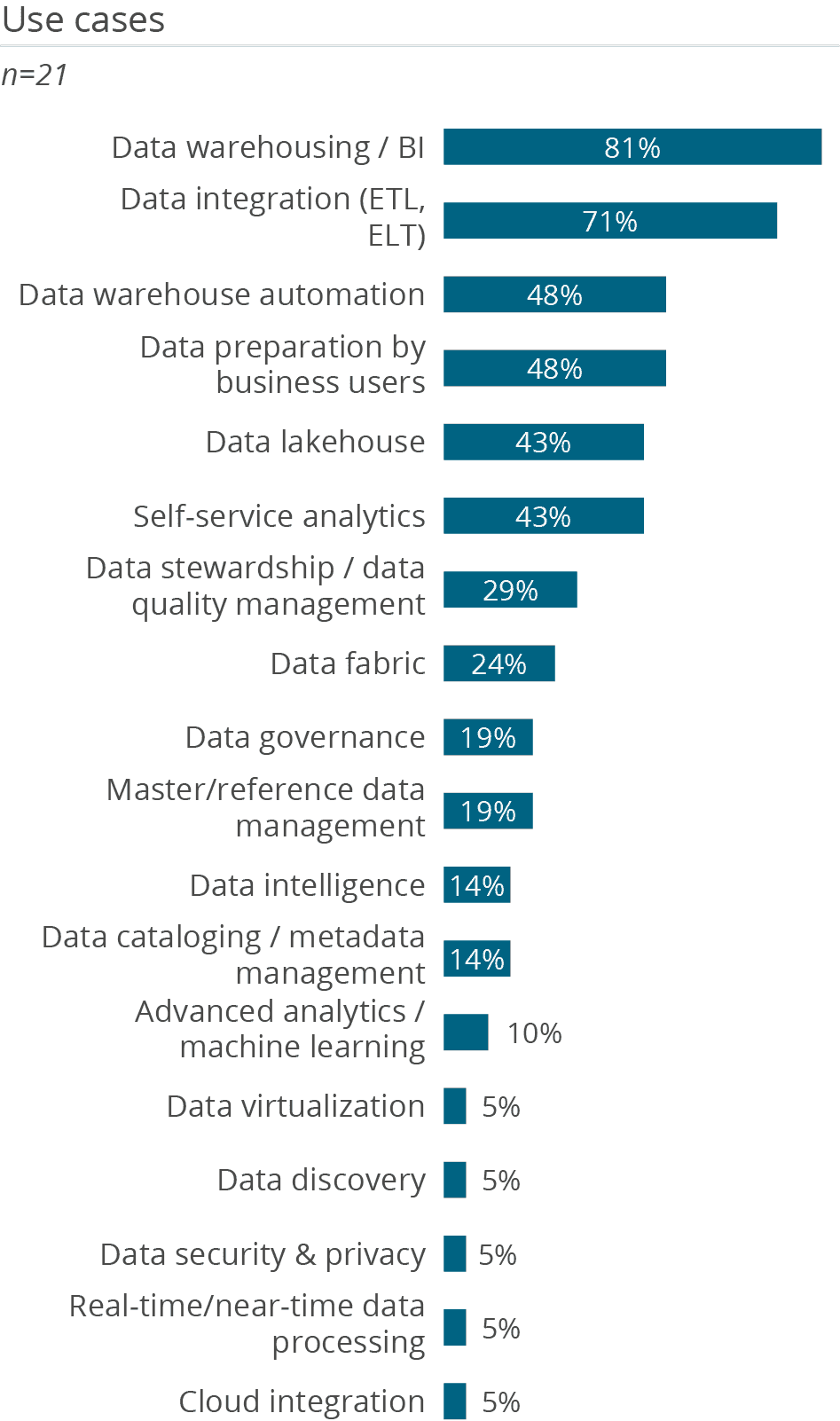
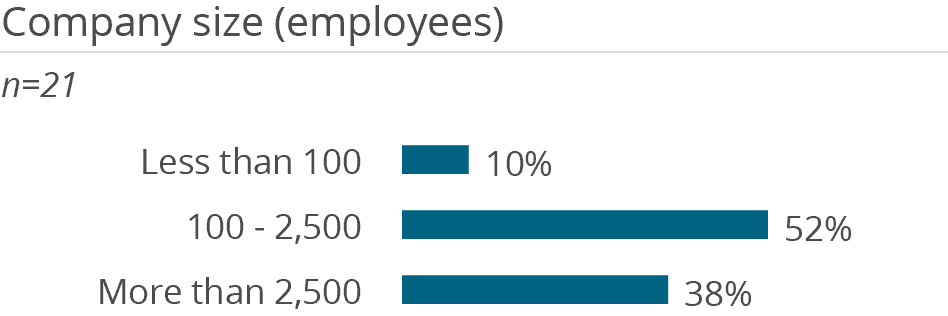
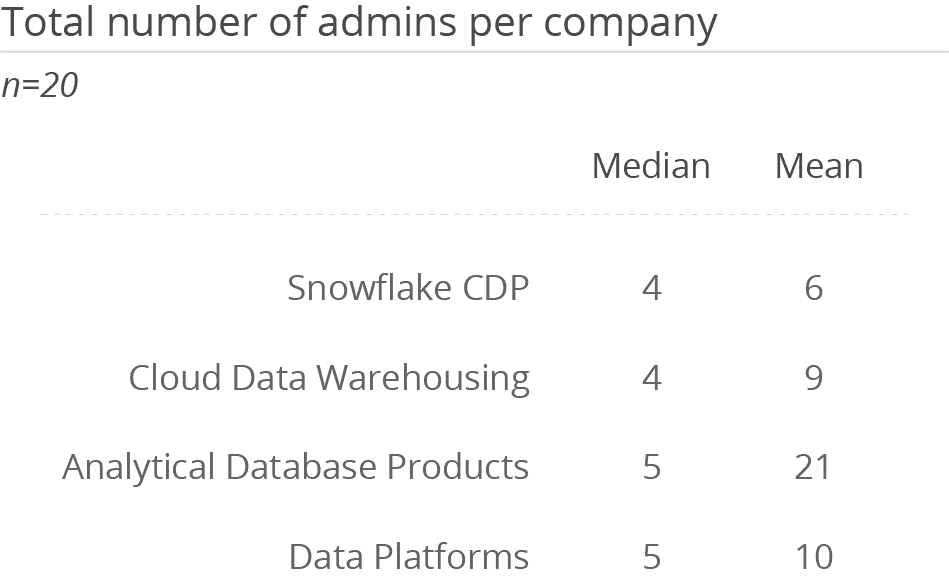
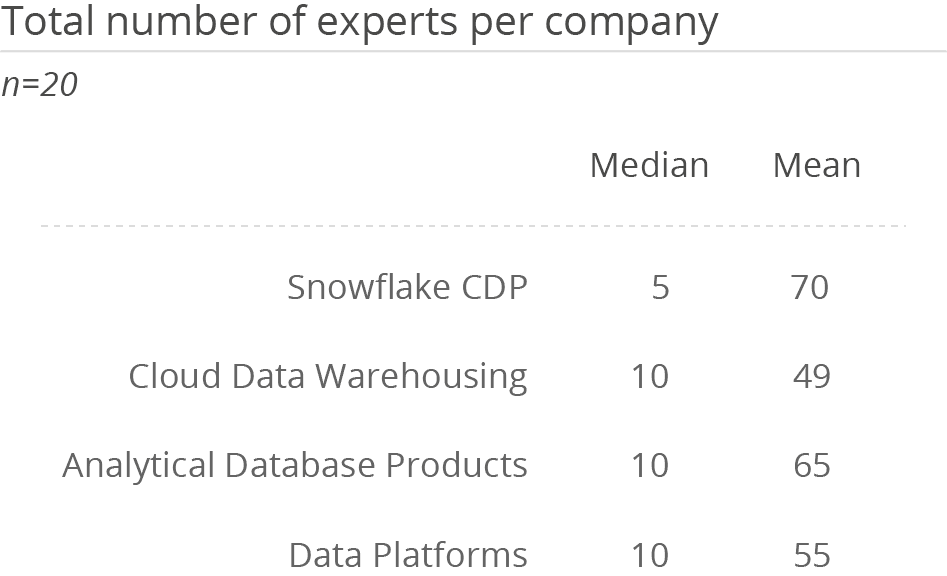
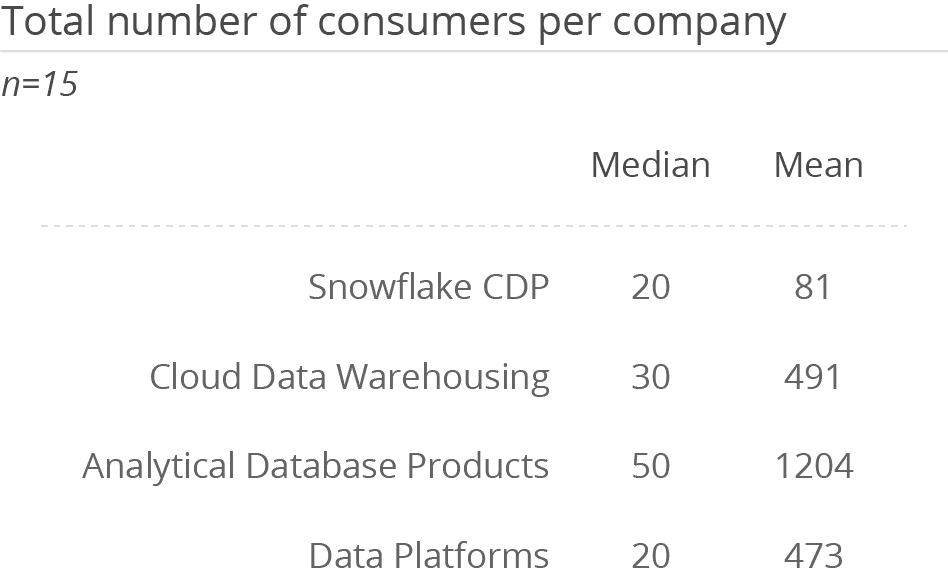
Want to see the whole picture?
BARC’s Vendor Performance Summary contains an overview of The Data Management Survey results based on feedback from Snowflake Cloud Data Platform users, accompanied by expert analyst commentary.
Contact us to purchase the Vendor Performance Summary- Register for a free sample Vendor Performance Summary download
- If you have any questions, feel free to contact us
